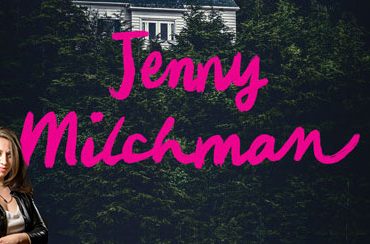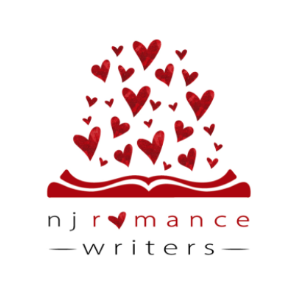Welcome back to our “Be Well, Write Well” interview series! This month, I interviewed Carol Van Den Hende, whom I met at the Writer’s Digest Conference in 2014. At the 2017 conference, she gave a brilliant talk on marketing for writers that had all of us participants eagerly calling out the names of global brand images and getting energized about branding our own work. As a fellow writer who also manages a full-time job and an at-home family, Carol is a personal inspiration to me. Enjoy!
What is your keystone habit (the habit that makes all other habits possible)?
Organization. I juggle a household with twins, and find that I feel more in control when my schedule and goals are organized. I use my calendar to keep track of appointments and commitments, even long-term ones into next year. I’ll keep notes in the calendar entry, which helps remind me later the purpose and details about that event. I even send family plans to my husband’s Outlook so that we stay on the same page!
Is there one wellness-related habit you’d never skip?
I adore dance class. Zumba? I’m there. Hip-hop? Yep. Moving with abandon is not just good for my body, it’s good for my spirit!
What is your daily writing routine?
As a working mom, I’m not usually able to adhere a rigid writing schedule. However, I do prioritize writing early in the morning before my commute. My wildest and freest ideas often come to me in the night, so I love writing in the 30-60 minutes after I first wake up.
Then, I seek chunks of time I can block on my calendar during weekends, and late nights after the kids are in bed. I’m protective of these times, letting my family know when I’ll be busy, and treating commitments of my own time with as much respect as an appointment with someone else.
I’m also an opportunistic writer, using any free time (during car rides, while cooking or at the gym) to daydream about fictional characters and plan scenes. When I’m full of ideas or have a deadline, I might even wake in the middle of the night and dash off some pages when everyone else is sleeping!
What are your essential writing “tools?”
Plain old Microsoft Word. The key for me is to keep my documents organized. One for my manuscript, another for creative ideas, a third for craft tips and lastly, a place for meta-information about my novel, from character sketches, scene lists, the pitch line, etc. I also keep a spreadsheet with the names of all my characters. I’ve heard that readers skim characters’ names, so the first letter of a name is often all they absorb. I try not to have main characters with the same first initial.
Where do you write?
Many days, my family allows me to take over our sunny kitchen table. When the weather cools, I hibernate under my bed covers (extra bonus if our Siberian cat joins me). On vacation, I might slip open my laptop poolside. Airplanes create a special cocoon for dreaming up new ideas and plots. I’ve even written perched on a bench of a children’s museum, and amid the cacophony of gymnastics’ meets.
I’m reminded of Dr. Seuss when he says: “They’re sleeping on steps! And on strings! And on floors! In mailboxes, ships and the keyholes of doors!” (just replace ‘sleeping’ with ‘writing’)
What’s one aspect of your current writing process that you learned the hard way?
I learned the hard way to crystallize the point of my story. During my first novel, I wrote without much forethought, creating characters and scenes as I needed them, writing to find out what would happen.
This was fun but led to divergent and competing storylines. In the end, a professional editor helped me see that I needed to pick the key point of my story (it was at its “heart” – pun intended – a love story). Which meant that I had to rewrite the entire manuscript.
Nowadays, before getting too far into a piece, I think about the key point I’m trying to make, how that reflects my values, and the unique perspective that I bring to the story.
Do you have different routines for different parts of the writing process: drafting vs. editing, for example? Do you have a “crop rotation” schedule, or work differently during different seasons of the year?
Yes, I approach drafting and editing separately, as they use different parts of my brain. I try to be loose and free for drafting, allowing my mind to explore avenues, and picture my scenes vividly.
During editing, I read like a reader, trying to look at the story with objectivity, seeking what’s assumed but missing, any muddy transitions, clarity of place, and checking to ensure there’s enough intrigue and forward momentum to keep the reader turning pages.
Tricks to help me see my words with fresh perspective include: changing the font or spacing of my manuscript, writing a scene from another character’s point of view, and playing out alternative paths of action.
I love the idea of applying ‘crop rotation’ to writing! I do find that a break from one type of writing can refresh me. For instance, this interview is a fun break from fiction!
What’s the biggest thing that gets in the way of your writing life?
Time! So I prioritize, juggling what’s most important to me, sometimes on a week-by-week or day-by-day basis. I’m inspired by Laura Vanderkam, the TED speaker who points out that we are each granted 168 hours per week. In my week, 115 hours are set for sleep, work, commuting, eating, showering and the gym, so 43 hours are free! Instead of spending half my free time watching TV, I write.
I can also accomplish a lot while doing rote tasks. I listen to professional development podcasts while cooking, take calls during my commute (as long as I’m not in traffic!), and dream up plots while in dance class.
Which would you give up first: writing, sleep, or breakfast?
I love to eat, and I love to write, so sleep seems most dispensable. Better yet, I strive to balance it all, sometimes writing while eating, and often writing while sleeping!
How do you maintain your mental health during difficult times?
Hmm…good question. Last month was the perfect chance to test that ability. We hosted international house guests, attended three galas, juggled our normal load of sports, school and work, plus I spoke at two writers’ conferences. Here’s what I found:
Taking care of myself helps. When I’m hungry or tired, I get crabby!
If the difficult time is related to a deadline, sometimes I can negotiate a little wiggle room to reduce the pressure, or find someone else to help out. My husband is great at keeping the house running, will always pop out for a last-minute item, and is a good listener too!
Most of all, I try to keep perspective. Things can always be worse, and I have so much to be grateful for…from family & friends, to work I love, and volunteering to give back.
How do you get into a creative mental space that fosters new ideas?
I get creative sparks from reading beautiful prose, listening to smart podcasts that make me ponder human behavior, and from my own dreams. Sleep generates vivid and wild worlds which I capture when I first wake. Those images can be precious, fleeting gems.
What book, blog or podcast would you recommend to writers who want to develop strong writing and wellness habits?
I love Janet Burroway’s classic, Writing Fiction. First published in 1996, it’s now in its ninth edition. For good reason. It’s full of solid writing advice, in-depth examples and thought-provoking exercises.
I commute more than an hour every day and have been devouring podcasts. My favorite one right now is “How I Built This,” about entrepreneurs and what they went through to start new businesses. I’m inspired by how much people believe in their ideas to fight through obstacle after obstacle, before achieving success. For instance, Gary Hirshberg borrowed so often from his mother-in-law to start Stonyfield Farm that his wife surreptitiously advised her mom not to invest in her own husband’s business. That kind of conflict makes great fodder for fiction!
The beauty is finding stories in the everyday moments all around me. And inside me. Mostly, I just need to listen.

Carol is an MBA and marketing strategy expert. For 20 years, she’s led the positioning, branding, product and insights development for multi-million to billion dollar brands. Carol loves collaborating with best-in-class advertising, design and promotions agencies and has managed brands across food, chocolate and gifting categories.
Carol writes contemporary fiction, and was a finalist in the Lone Star Writing Competition. She shares her marketing expertise with authors through branding, design and trends workshops and the “Where Writers’ Win” blog.
She consults and serves on the board of trustees for non-profit organization. She, her husband and twins have lived in the US and China, and share a home with their Siberian cat. Connect with Carol at www.facebook.com/carolvandenhende or Twitter @c_vandenhende.

Leanne Sowul is a writer and teacher from the Hudson Valley region of New York. She’s the curator of the website Words From The Sowul and authors the “Be Well, Write Well” column for DIY MFA. She writes historical/literary fiction and memoir; her work is represented by Suzie Townsend at New Leaf Literary Agency. Connect with her at leannesowul(at)gmail(dot)com, or on Twitter @sowulwords.






